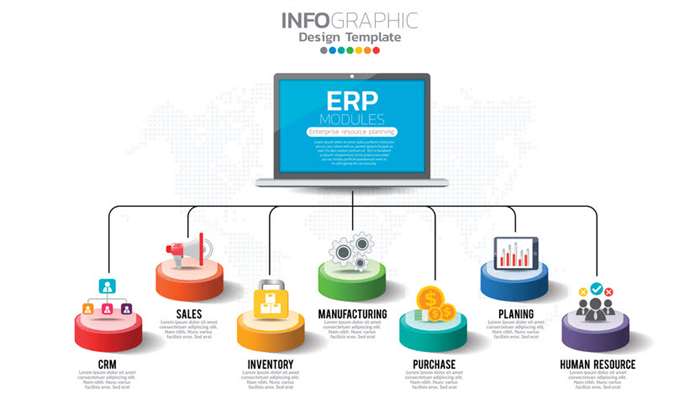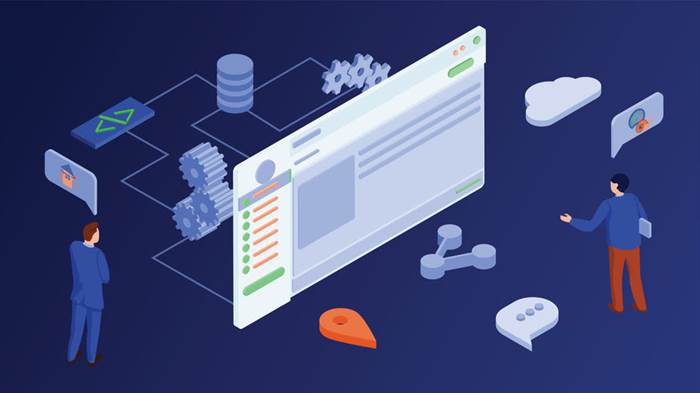Like efficiency management, MBO encourages (in theory at least) worker participation in goal-setting. However, MBO is frequently criticized as being too inflexible and so focused on targets that workers and managers are pushed to fulfill them no matter how they accomplish that. According to an article within the January 2003 Harvard Business Review, MBO is “an strategy to efficiency appraisal that is gone out of fashion for essentially the most half.” The advantages also can prolong outside the organization, with research exhibiting that efficiency administration typically produces greater customer satisfaction.
Application efficiency administration is the gathering of instruments and processes that allow IT organizations to ensure the supply of their software program purposes and meet buyer expectations. Monitoring information is an important a half of application performance administration, as it offers teams the perception they should determine areas in need of optimization and prioritize tasks successfully. In this text, we’ll talk about why software efficiency management is necessary, how it can enhance your visibility into dynamic and distributed methods, and what to think about when selecting an application performance management resolution. Application performance monitoring (APM) is the follow of tracking key software application efficiency metrics using monitoring software and telemetry data.
Software Scenarios
Organizational benefits include better cooperation and collaboration concerned in utility delivery. Front-end monitoring helps to supervise the appliance from the person’s standpoint — the person experience or UX. Back-end monitoring oversees the numerous companies and dependencies utilized by the applying, similar to a important database. And infrastructure monitoring — both native or cloud-based — helps make certain that all the software program applications can run on a well-configured and functional infrastructure.
In this weblog, we’ll talk in regards to the importance of utility efficiency monitoring tools within the context of both unified communications and finance. Application efficiency administration tools are crucial to managing your methods, gathering efficiency metrics, and guaranteeing all of your functions are doing what they were designed for and deployed to do. Machine learning-based instruments allow teams to mechanically determine causal relationships between performance issues and isolate their root cause.

A robust code profiling tool can run constantly in manufacturing with out affecting application performance—and provide both request- and service-level details. Telemetry knowledge from a serverless setting is type of different from a database or a virtual machine (VM), for example, however a enterprise nonetheless needs to normalize and centrally manage all the information because it comes in. When a cloud-native app includes many smaller microservices, information comes in at a a lot faster price than with a monolithic utility. All these components have added new challenges that make conventional APM harder in a cloud-native utility setting. Even although the advantages of APM are properly established, the rise of cloud-native applications has made it tougher to do nicely. For example, cloud-native apps generate far higher portions of telemetry data as a result of they are made up of a myriad microservices that dynamically spin up and spin down within the background.
Software Efficiency Management Defined
This will reveal the precise period of every transaction, and will exactly pinpoint any slow-downs or failures. We’ve mentioned the many technical and business benefits of using application performance monitoring. APM instruments consolidate these advantages into an important metric in relation to enterprise outcomes – customer satisfaction. Effective application performance monitoring gives organizations larger perception into underlying issues. Modern functions such as cell apps, web sites, and business apps may seem simple on the surface, however they are actually highly advanced.
Supports customization of method tracing rules, serving to you locate method-level efficiency problems online. Displays the call and dependency relationships between services in topologies, and traces the service call course of to locate exceptions. APM allows you to locate faults in minutes via application topologies and drill-downs. The basic distinction between the two concepts is in how much data is collected and the way that knowledge is processed and interpreted. Reduce helpdesk calls and troubleshooting time with automated intelligent alerts that predict issues primarily based on developments and real-time occasions. Dave has intensive digital marketing expertise working each client-side as properly as with main global companies.

The Gartner® Magic Quadrant™ for APM and Observability, a leading industry report on APM, supplies a clear definition of APM’s core capabilities as they have matured. After the program has developed its new goals, these too then should be reviewed to see if targets and objectives have been achieved and the complete course of be re-assessed. Displays JVM heap memory, JVM non-heap memory, and thread metrics, permitting you to shortly detect exceptions such as memory leakage and thread suspension.
End-user Expertise Monitoring
Analyzes transactions with slow responses to find and remedy application issues, thereby improving user expertise. For instance, if a disk runs short of software storage capability, the applying may endure efficiency or availability problems before an administrator can remediate the issue. In this instance, a performance management system would possibly use monitoring alerts and knowledge to add more storage automatically, stopping software problems from ever occurring.

The APM SuiteApp enables you to monitor the performance of your scripts and plug-ins if you use the Page Time Details and SuiteScript Analysis tools. The APM SuiteApp compiles info into a Performance Health Dashboard that is useful for troubleshooting. From the Performance Health Dashboard, you presumably can go to other tools in APM to analyze the cause of a difficulty. The dashboard shows points associated to record pages, scripts, saved searches, integrations, and processors.
What’s Management By Goals Vs Performance Management?
Even though transactions are subject to complicated utility performance problems, maintaining focus on the efficiency and execution of transactions can imply substantial increases in revenue and productivity. Transactions are the lifeblood of a bank or financial establishment’s business-critical applications, so zero-fail app efficiency and throughput within the application environment are very important. Fast, environment friendly analysis of efficiency points can create higher stability inside an application, gas product growth and scale back buyer churn. While monitoring alerts users when something is incorrect, observability can establish what’s taking place, why, and the method to fix the problem. Teams can leverage a service inventory and distributed tracing to make certain that essential transitions, similar to cloud migrations or modernizations, don’t introduce regressions.
This siloed strategy makes it difficult to identify root causes or resolve application performance issues. This limited visibility makes it harder to establish root causes of utility performance points, leading to longer downtimes when problems come up. Further, they solely present a single view of the applying architecture, usually missing the “cause and effect” of performance problems — for example, increased CPU usage attributable to a microservice failure. This may lead to pointless troubleshooting exercises and finger-pointing, not to mention wasted money and time. APM offers companies increased visibility and intelligence into the efficiency of purposes and their dependencies to detect and pinpoint utility performance points before real customers are impacted. APM delivers a powerful and increasing list of technical advantages and business benefits.

An effective application performance administration answer requires the usage of a number of instruments, however this can result in siloed knowledge, conflicting sources of fact, and context switching that slows down the troubleshooting process. APM instruments are often designed to take a glance at one specific facet of utility performance. Over time, organizations usually find themselves using a number of APM tools that don’t necessarily integrate with each other or provide complete perception into the appliance environment. However, digital groups typically find it tough to seek out the basis cause of an application performance problem. Causes can run the gamut — from coding errors to database slowdowns to internet hosting or network performance points. Even a battle with the operating system or the precise system getting used to access the app can degrade an application’s efficiency.
APM tools can help IT professionals avoid this problem by tracking all the servers at once to find out where an issue may be. Load testing and stress testing using APM software program can choose up efficiency bottlenecks on application elements and APIs to ensure consistent efficiency underneath stress. There are many open supply instruments you should use to handle and monitor your application’s performance. These instruments apm software meaning offer flexibility and control, however they also take plenty of time to implement and maintain—and can lead to sudden infrastructure and compute prices as your surroundings scales. Teams can use synthetic testing to proactively detect user-facing points and forestall breaking adjustments from reaching manufacturing. They also can leverage deployment monitoring instruments to ensure code modifications haven’t introduced efficiency regressions.
- This course of helps organizations hint occasions as they transfer throughout the app’s various parts, in addition to revealing when and where occasions are occurring — and whether efficiency effectivity is optimized.
- APM, additionally referred to as software performance monitoring, is crucial for maximum utility output, minimal inconveniences, and bettering enterprise outcomes.
- This restricted visibility makes it tougher to identify root causes of application performance issues, resulting in longer downtimes when issues arise.
- Application performance management is the gathering of tools and processes that allow IT organizations to make sure the availability of their software program functions and meet customer expectations.
- APM platforms allow organizations to constantly monitor for system degradation, useful resource usage and performance anomalies for prompt root trigger evaluation.
- Component monitoring supplies a deeper understanding of the assorted parts and pathways recognized in the earlier processes.
Deep dive element monitoring (DDCM) requires an agent installation and is usually targeted at middleware, specializing in internet, utility, and messaging servers. It ought to provide a real-time view of the J2EE and .NET stacks, tying them again to the user-defined business transactions. A sturdy monitor reveals a clear path from code execution (e.g., spring and struts) to the URL rendered, and at last to the user request. Since DDCM is closely associated to the second dimension within the APM mannequin, most merchandise on this area also provide software discovery dependency mapping (ADDM) as a half of their providing. Application Performance Management (APM) displays and manages the efficiency of cloud functions in real time.
Request Flow Map enables you to view live requests in context so you’ll be able to follow utility points to the source, whereas Watchdog uses machine studying to mechanically floor performance anomalies and establish their root trigger. While utility performance management is critical for each monolithic and microservice-based architectures, the latter presents a model new set of challenges. Without full visibility into every layer of your distributed applications and infrastructure, it could be extraordinarily tough to detect and resolve important performance points. As such, IT organizations have to leverage an array of monitoring tools in order to enhance their system’s observability and effectively handle its performance.
These microservices are usually run on distributed infrastructure parts, similar to VMs, containers, or serverless features. This design paradigm allows for every microservice to be scaled independently of one another, which may enhance the application’s availability, sturdiness, and efficiency. By default, or by design, completely different groups might deploy a mix of point options. Or, they may choose a single platform that extra absolutely encompasses the various layers and use circumstances throughout the utility surroundings. Point options can pose benefits at an area level and challenges at a macro level, while a platform strategy embraces a contemporary imaginative and prescient of APM that demonstrates clear advantages at the local and macro ranges. User experience management (UEM) is a subcategory that emerged from the EUE dimension to monitor the behavioral context of the user.
Advantages Of Level Solutions
Performance management techniques will usually combine monitoring data with automation and orchestration to bring a stage of autonomy to some downside remediation. Enterprise observability and monitoring tools should have the flexibility to combine seamlessly into the cloud-native software environments that it helps, with deployment and instrumentation processes fully automated. While some tracing instruments make pattern selections initially of a request’s lifecycle (i.e., head-based sampling), the best solutions enable you to ingest 100% of your traces by default. Traces should also seize and visualize the whole request—from frontend device to backend services—in order to ensure that teams have all the information they should troubleshoot. Database monitoring provides deep visibility into question performance metrics, clarify plans, and host-level metrics, which helps builders decide whether points are attributable to inefficient queries, suboptimal database design, or resource saturation. More and more methods architects are selecting to construct and deploy their purposes as a group of microservices, quite than as single monoliths.
The information collected by APM tools contains consumer CPU utilization, memory demands, knowledge throughput and bandwidth consumption. Application efficiency monitoring falls under the extra common, related term utility efficiency administration. While software efficiency monitoring solely focuses on tracking the performance of an application, utility performance administration focuses on the broader idea of controlling an app’s performance levels. A trendy APM platform designed specifically for cloud-native environments can ship protection throughout the total stack, encompassing the entire hybrid multi-cloud network. APM platforms allow organizations to repeatedly monitor for system degradation, resource utilization and performance anomalies for immediate root trigger evaluation. As end customers of your functions submit transactions to your systems for processing, it is important to observe every transaction end-to-end, all through the complete lifecycle.
Read more about https://www.globalcloudteam.com/ here.






